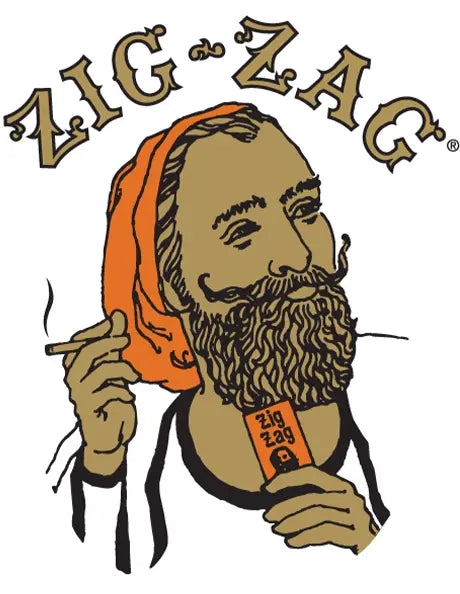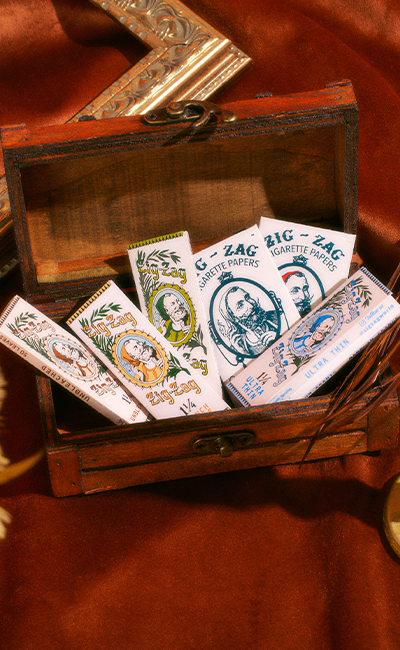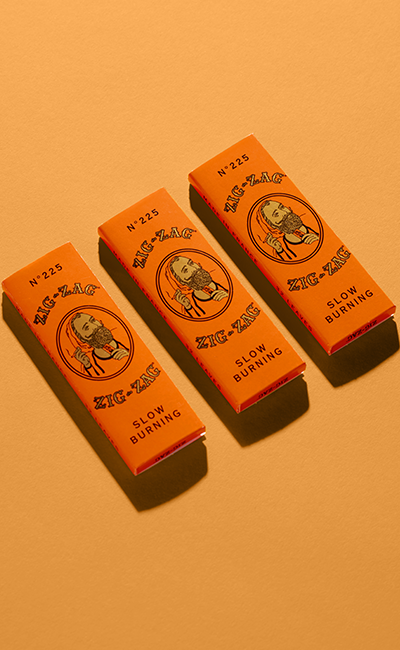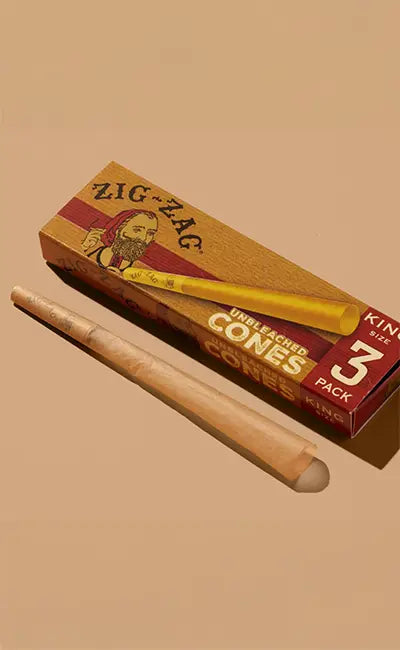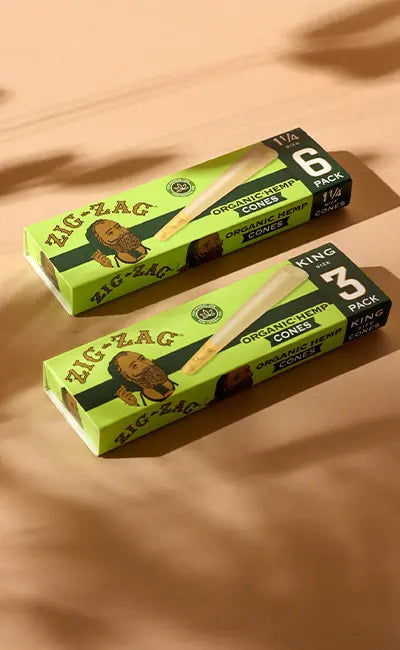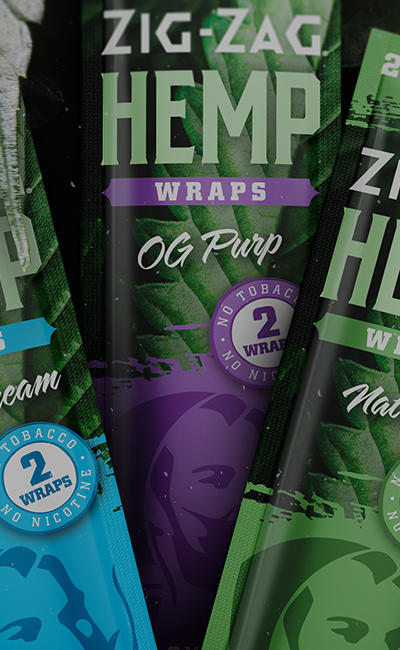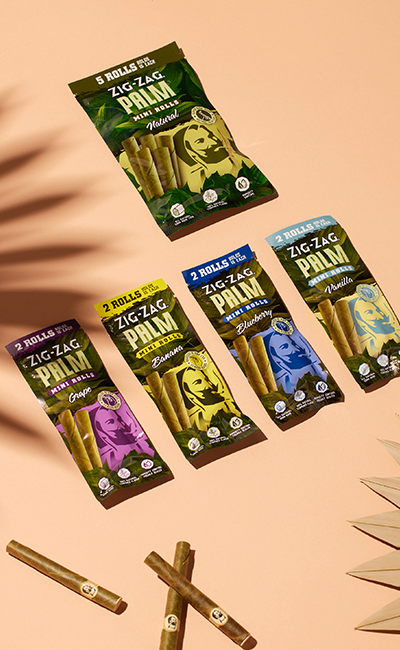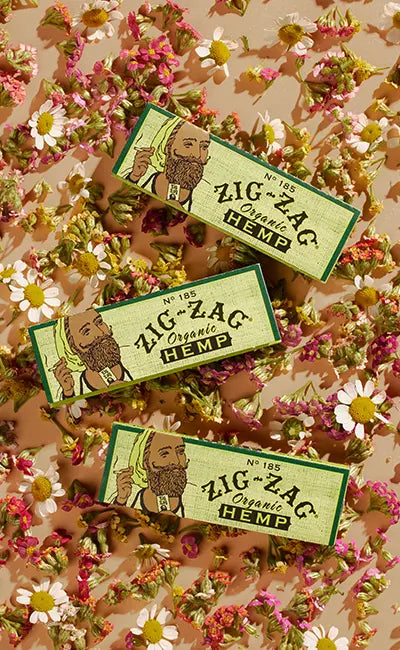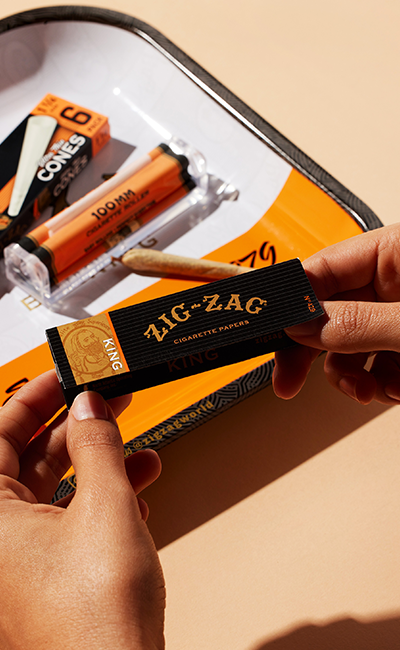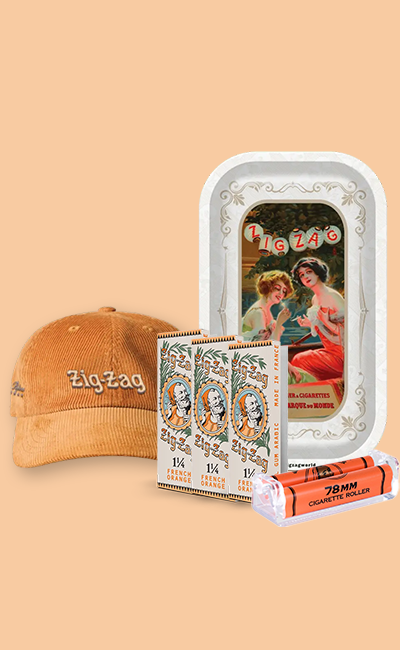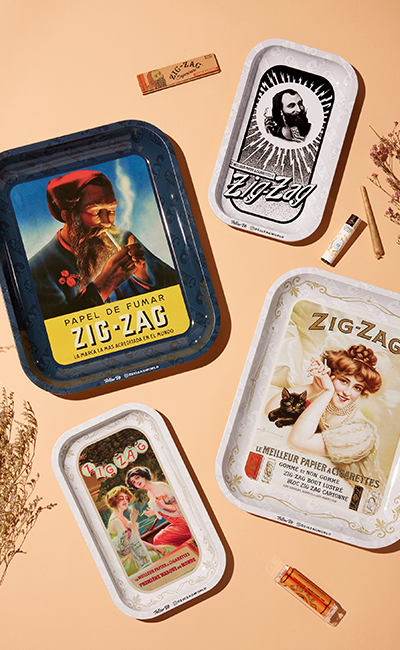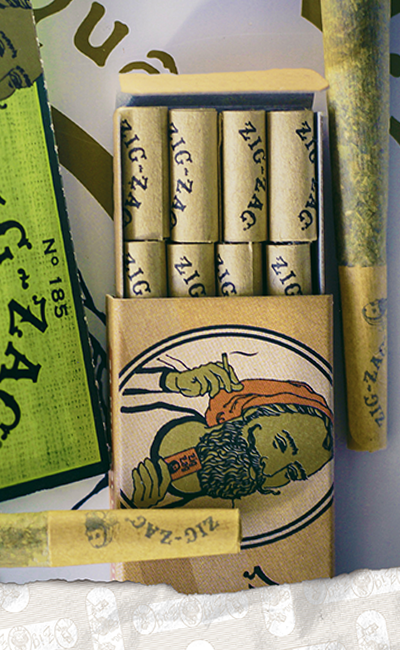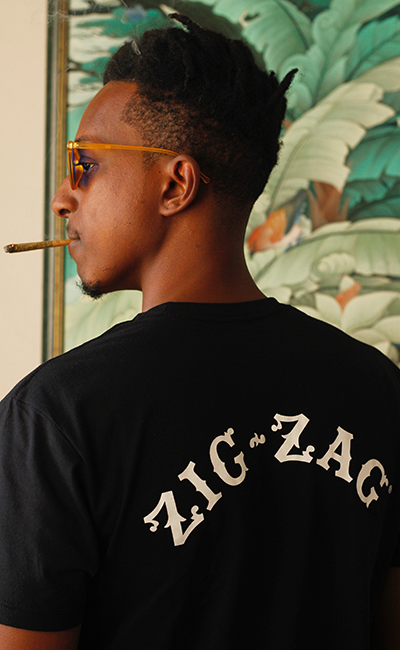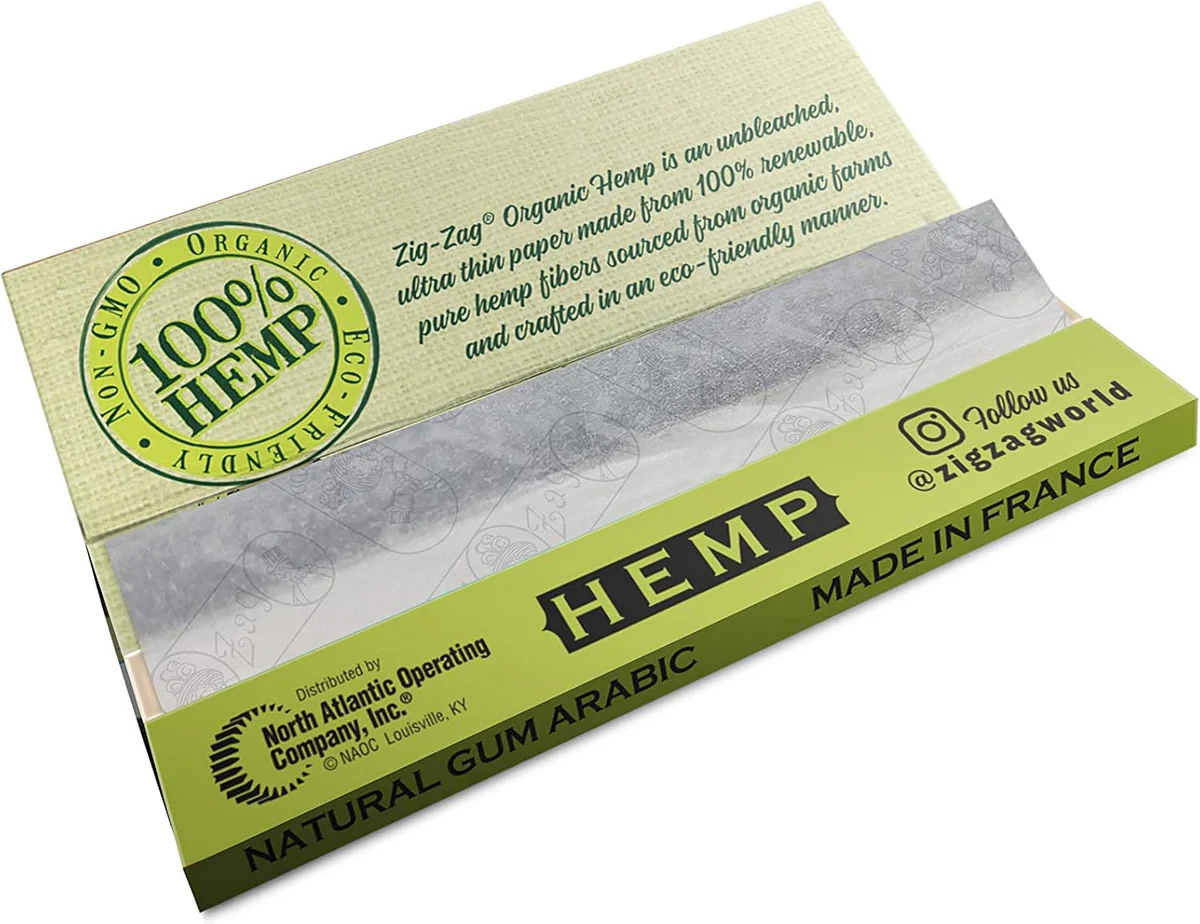Do Roll Papers Contain Tobacco? A Breakdown of the Materials
Most roll papers don't contain tobacco. But that hasn't stopped the internet from going back and forth about it. The confusion is totally understandable. Roll papers, blunt wraps, hemp papers... it all sounds kinda the same when you're new to it.
Here's what we've seen firsthand: people assume that if it's something you roll with, it must include tobacco. But that's just not true for most of what's out there. At Zig-Zag, we've been in the game for over a century, and we've watched trends come and go. But this question never seems to go away.
Do Roll Papers Contain Tobacco?
Most roll papers are made from plant-based materials like hemp, wood pulp, or rice and don't include any tobacco unless explicitly labeled as a tobacco wrap. They're literally just thin sheets designed to hold the contents of your choice. But the paper itself? That's where the confusion starts.
If you've ever seen or heard someone call a paper a "wrap" or vice versa, welcome to the club. Most people casually lump everything under one category, even though there's a key difference:
-
Roll papers are thin, plant-fiber sheets.
-
Tobacco wraps are thicker and made from actual tobacco leaves.
If you've ever picked up a pack and the texture felt soft and leaf-like, it's probably a wrap. That's where the tobacco comes in, not in the average roll paper.
What's Inside Your Rolling Paper?
Roll papers are made from plant-based fibers like hemp, wood pulp, rice, or flax. They're thin, tobacco-free sheets meant to wrap whatever you're rolling.
Common Roll Paper Materials
Here's a rundown of what roll papers are usually made of:
Wood Pulp
Probably the most common, especially for beginners. It's slightly thicker and more forgiving if your roll isn't perfect.
Why people use it:
-
Easy to grip
-
Consistent texture
-
Doesn't crumple as easily
Hemp
Sourced from industrial hemp, this option is plant-based and has a medium texture that's easy to work with once you've got the hang of it.
What you'll notice:
-
More natural appearance
-
Medium burn rate
-
Slightly rougher feel than rice
Rice
Think of these as the sleekest option out there. They're ultra-thin and super light. But heads up: they're not the easiest to roll with if you've got shaky hands.
Pros:
-
Burn slow
-
Low ash
-
Practically weightless
Great if you're looking for something that stays out of the way. Just don't use it outside when it's windy.
Flax
This one doesn't get as much attention, but it's actually pretty versatile. A little more texture than rice, but thinner than wood pulp. Some brands blend flax with other fibers for a balanced result.
Why it's worth trying:
-
Smooth finish
-
Balanced burn
-
Lightweight but durable
Flax isn't as widely available in stores, but when you do find it, it's usually part of a more curated paper line.
So What's That Sticky Strip?
Let's talk gum lines. That little strip on the edge of most roll papers? It's usually made from natural tree sap or acacia gum. Not glue, and definitely not anything synthetic.
Why it matters:
-
It helps the paper stay sealed once rolled
-
Doesn't alter the material or taste
-
Sticks without weird residue
Some brands skip it entirely, but once you've had one that won't seal, you'll miss that gum line real fast. Zig-Zag's been using natural gum for decades, and we're not switching it up.
What Makes a Rolling Paper "Organic"?
Organic rolling papers are made from unrefined plant fibers without artificial dyes or additives. They're minimally processed and often come with eco-friendly packaging.
Let's break it down. Here's what you're not getting with organic rolling papers:
-
No artificial colors
-
No chemical whiteners or chalk
-
No unnecessary chemical treatments
Now here's what is usually included:
-
Natural plant fibers (like organic hemp)
-
Minimal processing to keep fibers intact
-
Gum line made from acacia or other tree sap
-
Packaging that leans recyclable or plastic-free
"Organic" in this case applies to how the paper is treated from start to finish.
Why Hemp Papers Are a Popular Choice
Hemp papers are popular because they're made from renewable plant fibers, offer a smooth rolling experience, and burn at a steady pace. They've got that perfect mix of natural feel and everyday usability.
Hemp is grown for industrial use, meaning it's strong, fast-growing, and super versatile. The fibers are long and flexible, making them ideal for rolling papers.
Here's what sets hemp papers apart:
-
Made from industrial hemp: not the kind grown for other purposes
-
Plant-based and biodegradable: breaks down naturally without extra fuss
-
Balanced thickness: not as delicate as rice, not as bulky as wood pulp
-
Naturally light tan: no harsh chemical treatments
It's not just the eco angle, though that's a nice bonus. It's the whole feel of it. Hemp papers have this slightly textured surface that gives just enough grip without dragging. Great if your hands are a little sweaty. Or if you're not rolling on a flat surface. Or both.
Choosing the Best Rolling Papers for Your Style
The best rolling paper depends on what matters to you: burn speed, texture, thickness, and ease of use. Your ideal paper might be hemp, rice, or wood pulp, depending on how you roll and what you're rolling.
Match Paper Type to Your Preferences
So how do you figure out what's right for you? Here's a simple cheat sheet. Not saying this is universal, but it's what we've heard from people who've tried them all, and from our own learning curves.
|
Material |
Best For |
Feel |
|
Rice |
Clean, slow burns |
Thin and almost transparent |
|
Wood pulp |
New rollers, durability |
Slightly thick, textured |
|
Hemp |
Daily use, balance |
Medium weight, natural grip |
|
Flax |
Smooth rolls, mid-point |
Light and slightly soft |
Ask Yourself These (Actually Helpful) Questions
Forget the fancy descriptions on the back of the pack. Here's what you should actually be thinking about:
-
Do you roll often? If so, something with consistent texture, like hemp or wood pulp, might save you a lot of frustration.
-
Do you care about sustainability? Then organic hemp or flax might feel more aligned with your values.
-
Do you struggle with sealing or tearing? Go with papers that have a bit more grip, like classic pulp-based ones. Super thin ones can be unforgiving.
-
Do you switch it up depending on what you're rolling? You might wanna keep a few types on hand.
Size and Thickness Matter Too
This part trips up more people than you'd expect. Size and thickness can totally change your experience.
Here's what to keep in mind:
-
1 ¼ size = most common, holds a standard roll
-
King size = longer, good for sharing or longer burns
-
Slim papers = less material, cleaner burn
-
Thicker papers = easier to grip, better for shaky hands or windy days
Roll Paper vs. Tobacco Wrap: Know the Difference
Roll papers are thin, plant-based sheets that don't contain tobacco. Tobacco wraps are thicker, made from tobacco leaves, and often include nicotine. If you're avoiding tobacco, roll papers are the clear choice.
So what's the actual difference?
|
Feature |
Roll Paper |
Tobacco Wrap |
|
Material |
Plant fiber (hemp, rice, wood pulp, flax) |
Tobacco leaf or reconstituted tobacco |
|
Contains Tobacco? |
Nope |
Usually includes nicotine |
|
Thickness |
Thin to medium |
Thick and leaf-like |
|
Burn Style |
Steady, even |
Slower, heavier |
|
Scent/Flavor |
Neutral or unflavored |
Often flavored or scented |
|
Use Case |
Tobacco-free rolling |
Traditional cigar-style wraps |
Still unsure? Here's the rule of thumb we use: if it smells like a cigar when you open the pack, it's a wrap. If it looks like clean paper and doesn't have a scent? It's a roll paper.
Wraps Aren't "Bad", They're Just Not the Same
Wraps have their place. Some people prefer the slow, thick burn or the flavored leaf. Totally valid. But if you're lumping wraps and papers into one category? That's where things get messy.
A lot of people go for roll papers because they want to control what's in their session. We've seen customers pick up wraps by mistake thinking they were just extra-large papers.
Wraps come pre-infused with tobacco, and even when they're unflavored, they still carry nicotine from the leaf itself. That's a hard pass for folks who've made the switch to plant-based rolling, or just don't want anything extra added.
Zig-Zag Roll Papers: Clean, Trusted Materials
Zig-Zag offers a full lineup of roll papers made from trusted plant-based materials. From classic white to organic hemp, every option is backed by over 140 years of rolling history.
Classic White
You've definitely seen this one. Probably even used it. Our Classic White papers are kinda like that go-to hoodie you won't throw out. They've been around forever because they just work.
What makes them stick around?
-
Medium thickness for easy handling
-
Slight texture for grip (especially helpful if your fingers aren't cooperating)
-
Reliable burn that doesn't surprise you mid-roll
Organic Hemp
Our Organic Hemp Papers use organically grown hemp and skip all the unnecessary extras. No added colorants. No chalks or whitening agents.
Perfect if you're looking for:
-
Papers made from certified organic hemp
-
Minimal processing from start to finish
Ultra Thin
Our Ultra Thin Papers are for the those who don't want their paper to get in the way. These things are so lightweight they practically disappear when rolled properly, without turning into a tear-fest.
What to expect:
-
Clean, even burn with less ash
-
Less interference with flavor or aroma
We've spent over 140 years perfecting rolling papers, and we're still going. Each type we offer has a different purpose, but they all stick to the same rule: clean, plant-based materials and no hidden tobacco.
Conclusion: Know What You're Rolling With
Roll papers don't contain tobacco, and what they're made of matters. Choosing the right paper comes down to your preferences, your habits, and how much control you want over what's in the mix.
When you're choosing Zig-Zag, you're getting something that's been tested across generations, rolled in every setting imaginable, and refined without gimmicks. No tobacco in the paper. Want something that's stood the test of time? Our Vintage Collection brings together some of our most iconic papers.
Not necessarily, but flavored papers can sometimes cause confusion. Some flavored rolling products on the market are actually tobacco wraps, not traditional papers. That’s why it’s important to read the label closely. If the paper is made from hemp, rice, or wood pulp and doesn’t say “tobacco leaf” or list nicotine, it’s tobacco-free, even if it’s flavored.
Legit rolling paper brands don’t mix tobacco into the paper itself. If you’re buying from trusted names, like Zig-Zag, it’s safe to assume the paper is made from plant-based material and contains no tobacco. But be cautious of off-brand products or vague labeling. Some wraps marketed as “papers” might include tobacco or nicotine without being obvious.
Visually, it’s tricky. Most tobacco-free papers are light tan or white and feel like thin sheets. But some tobacco wraps can look similar if they’re processed to resemble paper. The best move is to check the packaging. Look for terms like “hemp,” “rice paper,” “wood pulp,” or “tobacco-free.” If it just says “wrap” or “cigar wrap,” it probably contains tobacco.
There’s a long-standing link between rolling papers and loose-leaf tobacco, especially in older advertising and pop culture. A lot of people associate papers with traditional hand-rolled cigarettes, which use tobacco. So even if the paper itself doesn’t contain any, the association sticks.
Yes, tobacco-free refers to the absence of tobacco leaf material in the paper. Nicotine-free means there’s no nicotine present. Rolling papers like those from Zig-Zag are both. But if you're buying wraps or hybrid products, it’s possible for a product to be labeled "tobacco leaf" (which contains nicotine) even if no tobacco has been added in another form.
Most clear papers are made from cellulose, a plant-based material that’s processed to be see-through. These typically don’t contain tobacco. That said, clear papers are a niche product and aren’t used by everyone. If transparency is your thing, just make sure the pack lists ingredients, and stick with known brands.
No. Brown doesn’t always mean organic, and it definitely doesn’t guarantee tobacco-free. Some brands dye their papers for a “natural” look, even if they’re heavily processed.
Yes, absolutely. Brands like Zig-Zag make rolling papers from plant fibers like hemp, rice, flax, or wood pulp, none of which include tobacco. These materials are renewable and biodegradable too, making them a solid choice if you care about what’s in your roll. Just steer clear of anything that says “wrap” or doesn’t list ingredients clearly.
No. The gum strip is usually made from natural acacia or tree sap. It helps the paper seal once it’s rolled. It’s not made from tobacco and doesn’t add any flavor or nicotine. Zig-Zag uses acacia gum on their papers, and it’s been that way for decades.
They’re usually sold side by side and sometimes packaged similarly. Some tobacco wraps even call themselves “papers” on the front while listing tobacco ingredients in small print. That’s where the mix-up happens.
